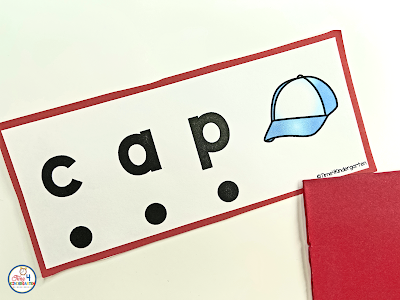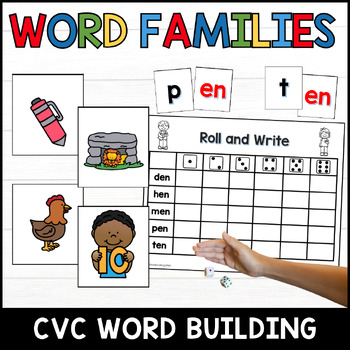Before jumping into teaching your students all about CVC words, it is important that they have a solid foundation of phonological awareness. Do they know all of their letters and sounds? if the answer is yes, then they are ready to begin the next step to becoming a reader. If they are still struggling with letter names and sounds, then no. They are not ready just yet. Continue to work on phonological awareness and build that strong foundation before moving to phonemic awareness.
What is Phonemic Awareness
To help your students with phonemic awareness it is important to understand what it actually is. Phonemic awareness is the ability to blend, segment, isolate, delete, substitute, or add sounds within a word. This includes words that are spoken or written. If you are confused about the difference between phonological awareness and phonemic awareness, you might find this article helpful from Reading Rockets.
Phoneme Segmentation
When your students are ready, you will first want to start with teaching your students how to segment a CVC word. When it comes to teaching segmenting there are many different techniques. I personally prefer the two palms pressed together to form a chopping motion. I have my students chop the sounds into parts. I like this kinesthetic approach as I believe it helps them to remember the sounds better.
When first starting out, I have students only identify the first sound they hear in the word. When they are successful, move to the ending sound before moving on to the medial sound. If you move too quickly through this process, what you will find is that students will not be successful, will lose interest, and just wait for you to tell them the sounds.
Segmenting Practice
I have segmenting cards I use with my class for CVC words as well as blends and digraphs. In the beginning, we are just segmenting the words. I say the word, and the students chop the sounds. We then move into the second part which is where I place the cards into an envelope. The side is cut off. I pull the card out slowly showing one letter at a time. The students begin blending the sounds of the letters together before I reveal the picture. This is always a favorite class phonemic awareness activity.
Word Families
When teaching CVC words I usually start with the -at family. The great thing about teaching word families is that it also helps with the teaching of rhyming too. The research shows that students benefit from activities focused on rhyming that are fun and engaging. This awareness can lead to reading and writing success. Once students are proficient, I can test their skills with some follow-up activities like the one in the picture below.
Writing CVC Words
During our daily phonemic awareness block, we write CVC words. This doesn't need to be a lot. Just a few, as in no more than 5. Make sure to get in those difficult vowels sounds like e, i, and u and the consorts like g and j, y, and w. Some of my favorite words are jet, bin, gum, yet, win, wet, and leg,
Building CVC Words
There are so many hands-on activities that can be used with students to build CVC words. Some of my favorites use play-doh and magnetic letters. Both of these require students to use fine motor skills.
With play-doh, students are manipulating the dough to form each letter to make the CVC words. When using magnetic letters, students are typically digging through bins of letters looking for the correct letters using a pinching technique to grasp the letters. When looking at the activity, one might not think that it doesn't involve many fine motor skills, but for students who lack these skills, the simple task of pinching and grabbing just the right letter can prove to be difficult, if their fingers don't have that muscle memory formed.
This CVC resource is great for individual students. Each student has their own letters to build words with.









No comments
Post a Comment